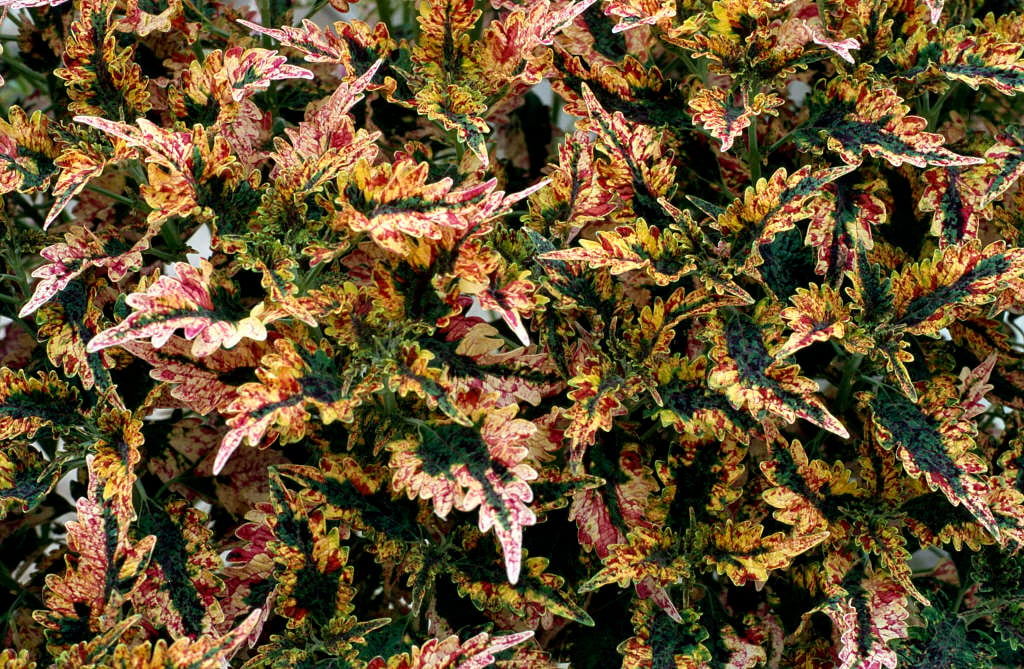Coleus scutellarioides 'Paisley Shawl' (v)
coleus 'Paisley Shawl'
'Paisley Shawl' is a bushy perennial to 60cm, the leaves dark green with purple-brown speckles, the margins cream with red speckling

Buy this plant
Size
Ultimate height
0.5–1 metresTime to ultimate height
1–2 yearsUltimate spread
0.1–0.5 metresGrowing conditions
Moisture
Moist but well–drainedpH
Acid, Alkaline, NeutralColour & scent
| Stem | Flower | Foliage | Fruit | |
| Spring | Brown Cream Green Purple Red | |||
|---|---|---|---|---|
| Summer | Blue White | Brown Cream Green Purple Red | ||
| Autumn | Brown Cream Green Purple Red | |||
| Winter |
Position
- Full sun
- Partial shade
Aspect
South–facing
Exposure
Sheltered Hardiness
H1CBotanical details
- Family
- Lamiaceae
- Native to GB / Ireland
- No
- Foliage
- Deciduous
- Habit
- Bushy
- Genus
A genus of annual or perennial herbs or shrubs, some of which can be succulent or tuberous in nature, and one of the easiest plants to propagate. Their velvety leaves add vibrant shades of red, pink, green and purple to beds and borders, pots and containers
- Name status
Accepted
How to grow
Cultivation
Best grown in humus-rich, moist but well-drained soil in sun or partial shade, needs a warm, sheltered position. Use as summer bedding or as a container plant either outdoors or under glass. Grown for its foliage, the flowers are usually removed and the young shoots pinched out to promote a bushy shape
Propagation
Propagate by softwood cuttings
Suggested planting locations and garden types
- Patio and container plants
- City and courtyard gardens
Pruning
No pruning required
Pests
May be susceptible to aphids, glasshouse whitefly, vine weevil and glasshouse red spider mite
Diseases
Generally disease-free
Get involved
The RHS is the UK’s gardening charity, helping people and plants to grow - nurturing a healthier, happier world, one person and one plant at a time.